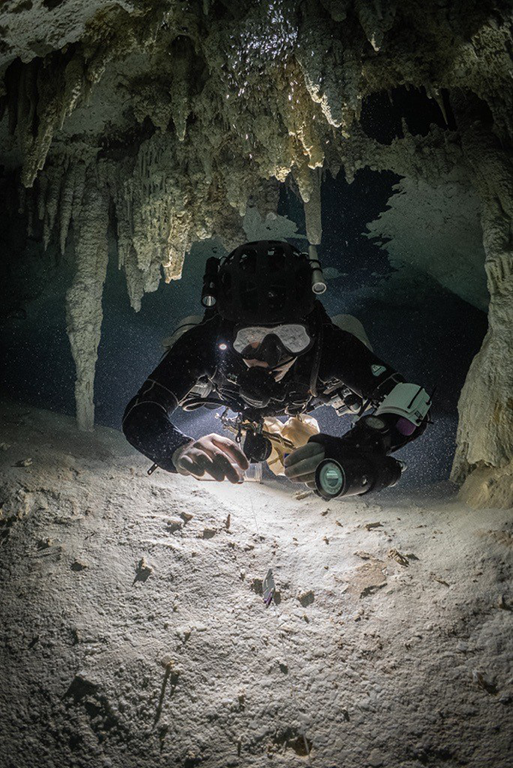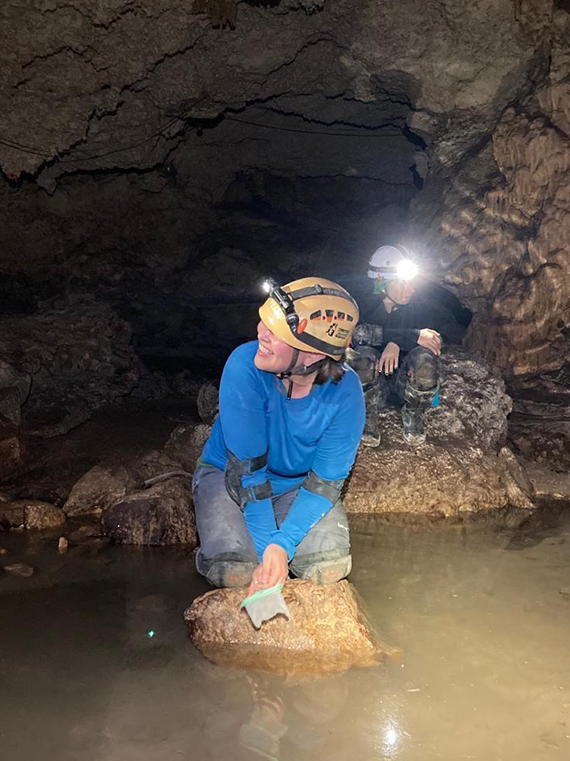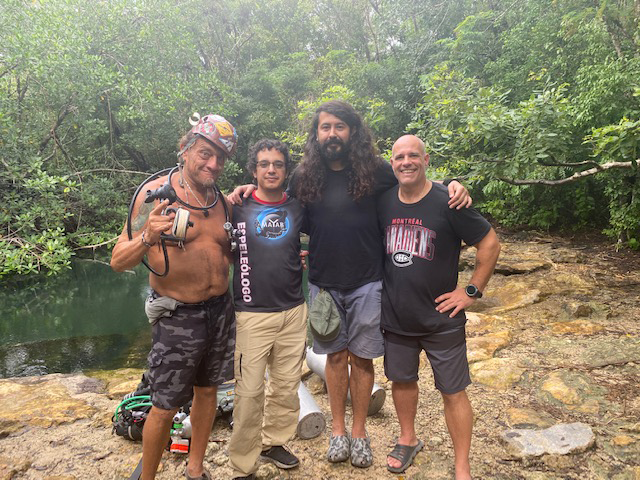University researchers explore underwater caves to study the strange creatures living in these extreme environments
In an isolated, subterranean cave, some 75 feet beneath the surface of the dark water, Dr. Fernando Calderon-Gutierrez is unraveling a mystery.
Calderon-Gutierrez, a biologist and postdoctoral research fellow at Texas A&M University-San Antonio, is on a mission to discover and study some of the strange and rarely seen creatures living in underwater caves. He and Dr. Elizabeth Borda, associate professor and the project’s principal investigator, recently returned from an expedition to the Yucatan Peninsula and Cozumel Island, Mexico.
During the expedition, Calderon-Gutierrez worked with local guides and divers, exploring cave systems filled with otherworldly formations and strange creatures that thrive in extreme environments without sunlight.
“Underwater caves are considered a very challenging environment,” he said. “That’s one reason there isn’t more research being done.”
 Dr. Fernando Calderon-Gutierrez explores an underwater cave in Mexico as part of an NSF-funded research project.
Dr. Fernando Calderon-Gutierrez explores an underwater cave in Mexico as part of an NSF-funded research project.
The expedition was part of a nearly $1 million research project funded by the National Science Foundation in 2022. A&M-San Antonio was awarded around $380,000, while $620,000 went to project collaborators at Woods Hole Oceanographic Institution, a Massachusetts-based nonprofit dedicated to ocean research, exploration and education. The project is scheduled to be completed in 2025.
While Calderon-Gutierrez dives in the underwater cave’s murky depths, with tubes and syringes to collect critters, sediment samples and water profiles, Borda serves as surface support during the two- to three-hour dives. She photo documents the samples and prepares them for future analysis.
 Dr. Elizabeth Borda collecting shrimp from shallow pools in an underwater cave.
Dr. Elizabeth Borda collecting shrimp from shallow pools in an underwater cave.
Back at the University lab, Borda and Calderon, with the help of undergraduate and graduate students, use genetic and genomic tools to learn more about the unique biodiversity living in these caves, including the discovery of unknown species.
Species include pale, nearly translucent blind shrimp and remipedes, a venomous crustacean and top predator with an elongated trunk and paddle-like appendages. Other species found in the caves are considered vulnerable to extinction. The project also aims to bring new insights into how the creatures living in subterranean estuaries respond to meteorological events, such as hurricanes and heavy rainfall.
“The project has major implications for research and conservation efforts,” said Borda. “When we encounter these species, we're adding new genetic data and aim to learn more about their evolutionary relationships and population genetics.”
As Calderon-Gutierrez and Borda continue their project, they’re sharing their findings with the local community of cavers and divers in Mexico. “Everyone, from kids to adults, is learning about what is living in the middle of these ecosystems,” said Borda. “There are all of these cool little critters that look like aliens that are right in their backyards.”
 Local diver/instructor "Monstro," Dr. Fernando Calderon-Gutierrez, Universidad Nacional Autónoma de México student Jairo Arroyave, and local diver/instructor David.
Local diver/instructor "Monstro," Dr. Fernando Calderon-Gutierrez, Universidad Nacional Autónoma de México student Jairo Arroyave, and local diver/instructor David.
Borda said sharing this information also speaks to the broader purpose of the project: helping build relationships with local communities and fostering awareness of the underwater caves’ biodiversity. Deeply connected to Mayan culture, the caves or “cenotes” support species that are integral to the region’s delicate ecosystems.
“By collaborating with local divers, researchers and citizen scientists, our work amplifies knowledge and empowers those who live and work in the region to become stewards of these flooded cave systems,” said Borda. “We highlight the ecological importance of these caves as critical components of broader communities.”
Outcomes of the Borda lab’s research have recently been published in such notable journals as Scientific Reports, Ecology and Evolution and Proceeding of the Royal Society B.
In addition to his work on this project, Calderon-Gutierrez also serves as the University’s first Dive Safety Officer. He will manage and oversee diving operations in accordance with safety standards set by the American Academy of Underwater Sciences as part of a new Dive Program in November 2024. The program will include first aid and CPR training courses for university faculty, staff and students.